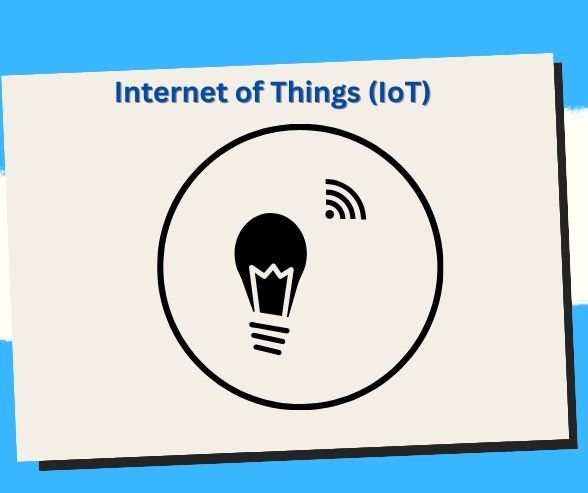
 The Wave of Tomorrow: Millimeter Waves in 5G – What You Need to Know!
The Wave of Tomorrow: Millimeter Waves in 5G – What You Need to Know! 


 Millimeter Waves in 5G: Advantages and Challenges
Millimeter Waves in 5G: Advantages and Challenges 

5G technology has been the talk of the town, promising lightning-fast internet speeds, low latency, and the ability to connect a vast number of devices simultaneously. At the core of this revolutionary technology lies millimeter waves, or mmWave. In this comprehensive article, we’ll delve into the world of millimeter waves in 5G, exploring their advantages, challenges, and role in shaping the future of wireless communication.

Millimeter waves, often abbreviated as mmWave, are a part of the electromagnetic spectrum with frequencies ranging from 30 gigahertz (GHz) to 300 GHz. To put this in perspective, traditional 4G networks operate at frequencies below 6 GHz. Millimeter waves are so named because their wavelengths are measured in millimeters.
A. The Advantages of Millimeter Waves
Millimeter waves offer several advantages that make them an essential component of 5G technology:
B. High Data Rates
Due to their high frequencies, millimeter waves can quickly transmit vast amounts of data. This is crucial for delivering the ultra-fast internet speeds promised by 5G.
C. Low Latency
Millimeter waves can support low-latency communication, making them suitable for real-time data transmission applications, such as autonomous vehicles and remote surgery.
D. High Bandwidth
The availability of large swaths of unused spectrum in the millimeter wave range means that 5G networks can simultaneously provide high bandwidth connections to many users.
E. Massive Device Connectivity
Millimeter waves enable 5G networks to connect many devices, paving the way for the Internet of Things (IoT) and smart cities.

While millimeter waves offer remarkable benefits, they also present unique challenges:
A. Limited Range
One of the most significant challenges with millimeter waves is their limited range. Higher frequency signals have shorter wavelengths, which means obstacles like buildings and foliage more easily absorb them and can only travel relatively short distances. This requires the deployment of a dense network of small cell stations.
B. Signal Blockage
Millimeter waves are susceptible to signal blockage by physical objects, including buildings, trees, and raindrops. This necessitates careful network planning to ensure consistent coverage.
C. Line-of-Sight Communication
Millimeter waves often require a clear line of sight between the transmitter and receiver, which obstacles or environmental changes can disrupt.
D. Weather Interference
Certain weather conditions, particularly heavy rain and snow, can attenuate millimeter wave signals, affecting signal quality and reliability.

Despite the challenges, millimeter waves play a crucial role in 5G technology and have a wide range of applications:
A. Enhanced Mobile Broadband
Millimeter waves are at the forefront of 5G’s promise of faster and more reliable mobile broadband. Users can expect seamless streaming, quicker downloads, and improved internet experience.
B. Fixed Wireless Access (FWA)
Millimeter waves are being used for FWA to bring high-speed internet to homes and businesses, especially in areas where traditional wired broadband is challenging to deploy.
C. Augmented Reality (AR) and Virtual Reality (VR)
Millimeter waves enable the low-latency, high-bandwidth connections required for immersive AR and VR experiences. From gaming to training simulations, millimeter waves make it possible.
D. IoT Connectivity
The vast bandwidth provided by millimeter waves makes them ideal for connecting IoT devices in smart homes, cities, and industries. This opens the door to countless applications, from smart thermostats to industrial automation.
E. Autonomous Vehicles
The low-latency communication made possible by millimeter waves is essential for autonomous vehicles’ safe and reliable operation. Real-time data transmission is crucial for vehicle-to-vehicle (V2V) and vehicle-to-infrastructure (V2I) communication.

As 5G networks continue to roll out and leverage millimeter waves, there are key deployment considerations:
- Small Cell Infrastructure: A dense network of small cell stations is required to overcome the limited range of millimeter waves. These stations are typically placed on streetlights, utility poles, and buildings.
- Network Planning: Careful planning ensures that millimeter wave signals can penetrate obstacles and provide consistent coverage.
- Beamforming: Beamforming technology focuses millimeter wave signals toward specific users, improving signal quality and reducing interference.
- Backhaul Connectivity: To support the high data rates of millimeter waves, robust backhaul connections are needed to transport data to and from the small cell stations.

In conclusion, millimeter waves are a fundamental component of 5G technology, enabling faster speeds, lower latency, and the connectivity needed for various applications.
As 5G networks expand and millimeter wave technology continues to evolve, we can anticipate a future where augmented reality becomes a daily tool, autonomous vehicles redefine transportation, and the Internet of Things transforms our homes and cities.
So, whether you’re streaming a 4K movie on your smartphone, benefiting from low-latency communication in your autonomous vehicle, or living in a smart city with interconnected devices, remember that millimeter waves are the invisible force behind the seamless and connected future that 5G promises to deliver.
Embrace the future with open arms, for millimeter waves are ushering in an era of connectivity and innovation that will change how we live, work, and communicate in the future.
Related Queries
Millimeter Waves in 5G: Advantages and Challenges
Riding the Wave: 5G’s Millimeter Waves Unveiled
Harnessing the Future: Millimeter Waves in 5G Evolution
Exploring 5G’s Millimeter Waves and Beyond
Breaking the Barriers with Millimeter Waves in 5G
The Wave of Tomorrow: Millimeter Waves Explained
5G’s Millimeter Waves and the Future of Connectivity
Navigating the Challenges of Millimeter Waves in 5G
Save/Share this story with QR CODE
Disclaimer
This article is for informational purposes only and does not constitute endorsement of any specific technologies or methodologies and financial advice or endorsement of any specific products or services.
 Need to get in touch?
Need to get in touch?

We appreciate your reading. 
1.) 

Your DONATION will be used to fund and maintain NEXTGENDAY.com
Subscribers in the Philippines can make donations to mobile number 0917 906 3081, thru GCash.
3.) 
4.) 
AFFILIATE PARTNERS

World Class Nutritional Supplements - Buy Highest Quality Products, Purest Most Healthy Ingredients, Direct to your Door! Up to 90% OFF.
Join LiveGood Today - A company created to satisfy the world's most demanding leaders and entrepreneurs, with the best compensation plan today.

 Business, Finance & Technology
Business, Finance & Technology











 Explore the frontier of cognitive biometrics, where mental patterns […]
Explore the frontier of cognitive biometrics, where mental patterns […]

